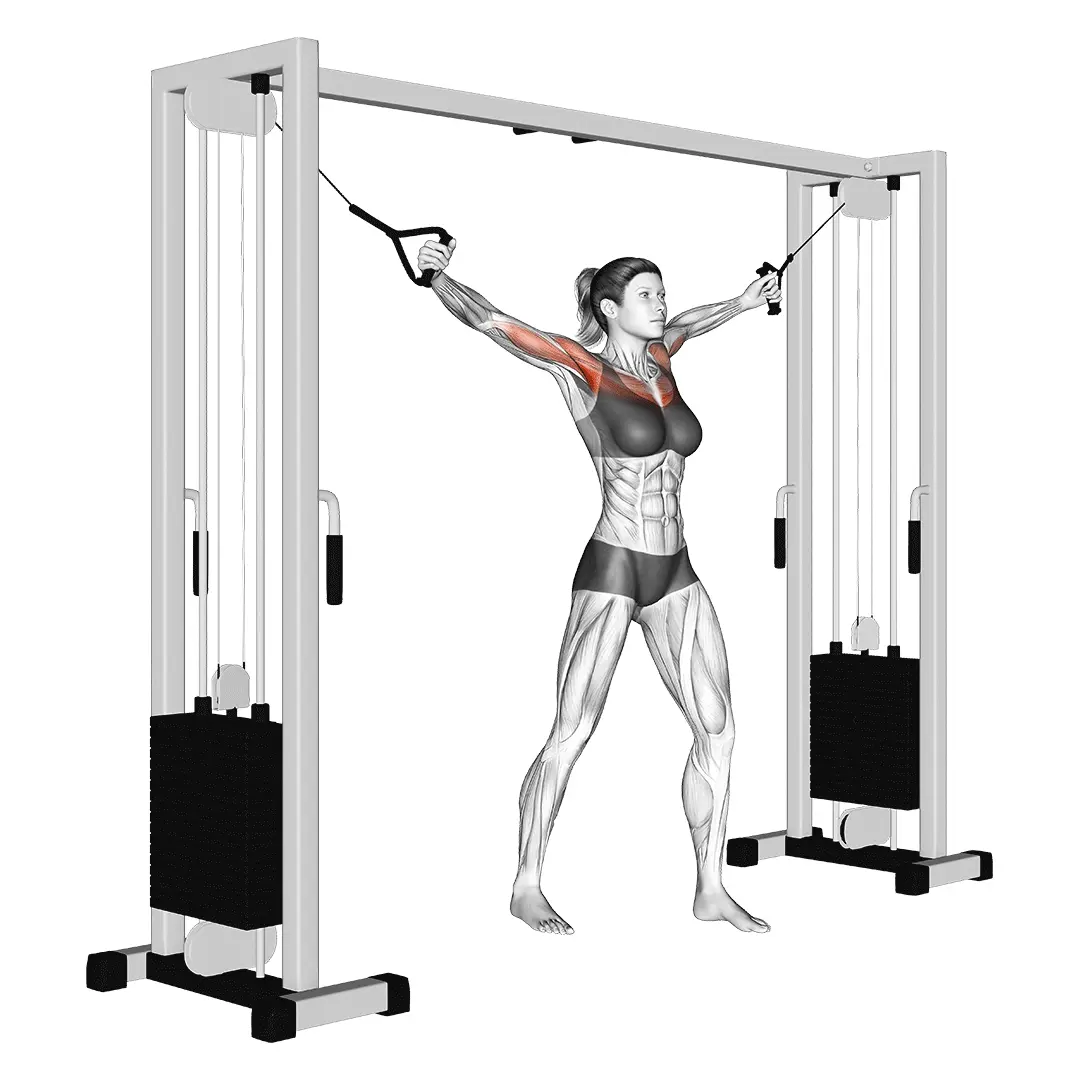Dumbbell Floor Press

Muscles Involved
The dumbbell floor press is a strength training exercise primarily targeting the pectoral muscles (chest), specifically the pectoralis major. Additionally, it engages the triceps brachii, responsible for elbow extension, as well as the anterior deltoids (shoulders). As a floor-based variation of the traditional bench press, it limits range of motion, helping to minimize shoulder strain while ensuring that the triceps and chest receive adequate work. Secondary muscles involved include the stabilizers in the core and the muscles in the upper back, which assist in maintaining proper posture during the lift.
Top Mistakes
- Letting elbows flare out too wide, which can lead to shoulder strain.
- Using excessive weight, resulting in poor form and loss of control.
- Neglecting core engagement, which may cause back arching during the lift.
- Not maintaining proper alignment between wrists and elbows, increasing the risk of injury.
Execution Tips
- Start by lying flat on your back on the floor with your knees bent and feet planted.
- Hold a dumbbell in each hand; position them at chest level with palms facing towards your feet.
- Keep your elbows tucked at a 45-degree angle relative to your body to protect your shoulders.
- Engage your core by tightening your abdominal muscles and avoid arching your back.
- Press the dumbbells upward until your arms are fully extended, then slowly lower them back to the starting position, ensuring controlled movement throughout.
Workouts
The dumbbell floor press can be integrated into various workout routines aimed at building upper body strength. A standard recommendation involves performing 3 to 4 sets of 8 to 12 repetitions, depending on your fitness goals—lower reps and higher weights for strength, and higher reps for hypertrophy and endurance. To complement the floor press, consider pairing it with exercises such as push-ups, bent-over rows, or shoulder presses to ensure balanced upper body training.
Conclusion
In summary, the dumbbell floor press is an effective exercise for developing upper body strength while minimizing the risk of shoulder injury. By focusing on proper technique and form, individuals can reap significant benefits, including increased muscle recruitment in the chest and triceps, improved stabilization, and a convenient setup that requires minimal equipment. As part of a well-rounded fitness regimen, this exercise can contribute to overall upper body strength and aesthetic enhancement.



